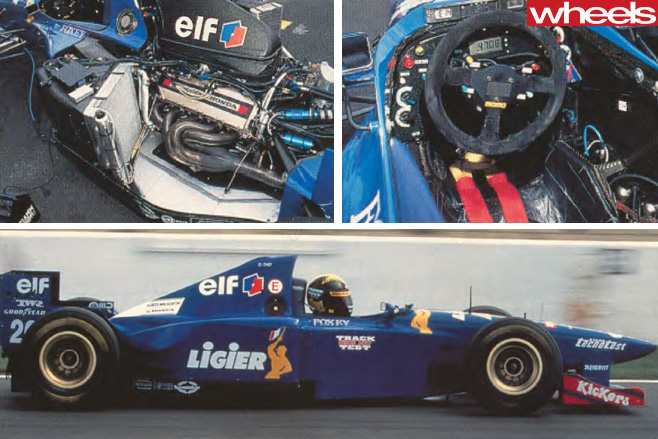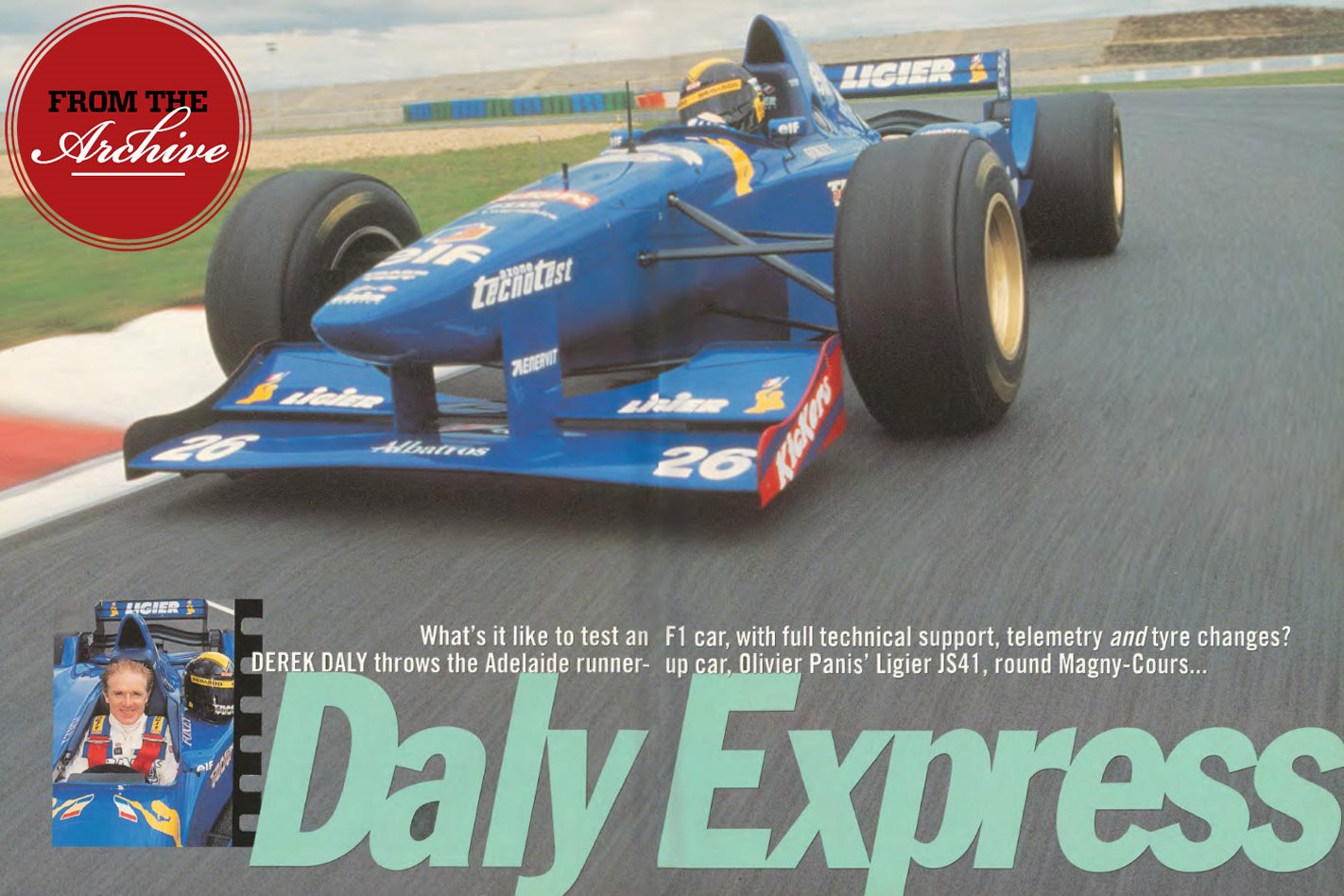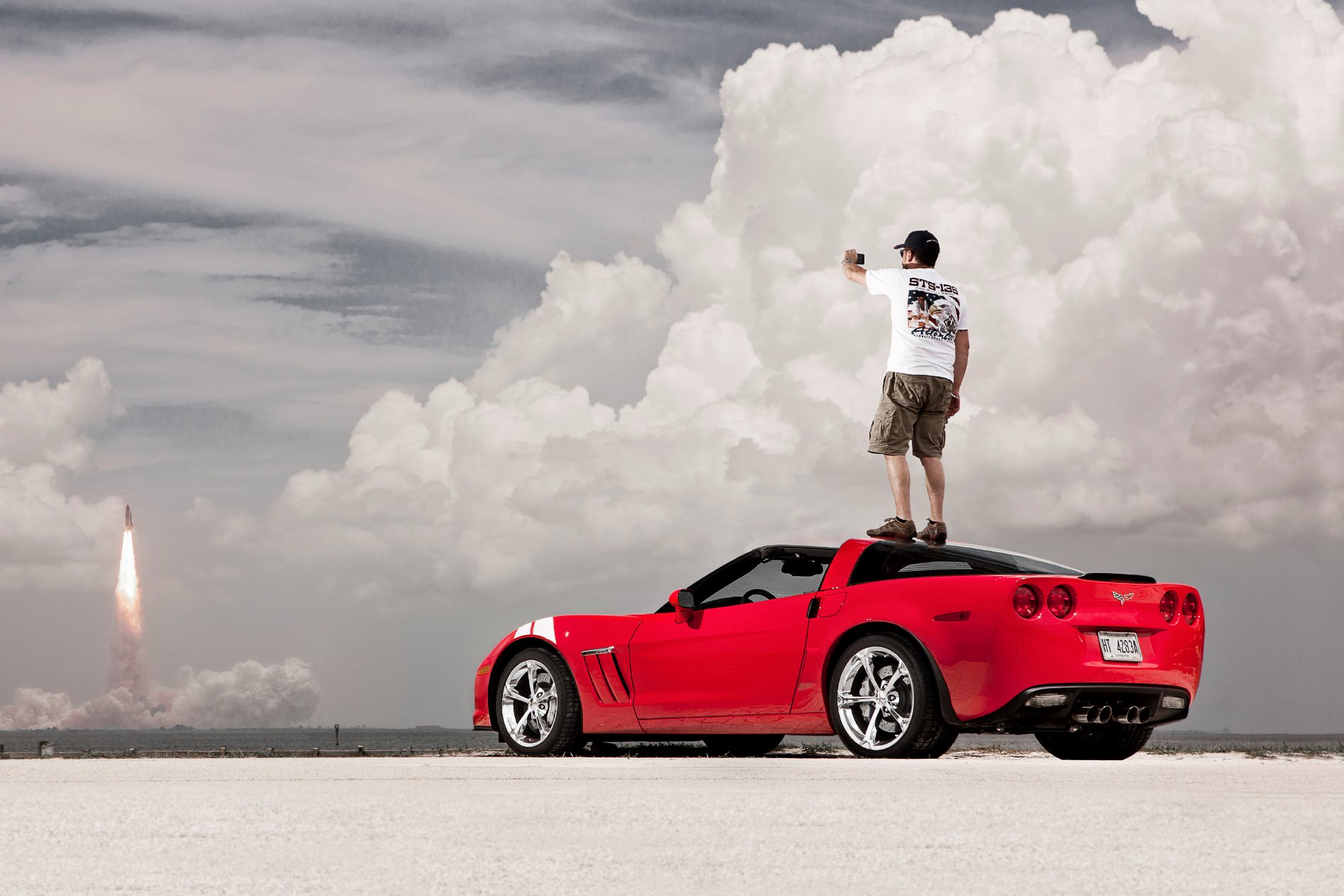What’s it like to test an F1 car, with full technical support, telemetry and tyre change? Derek Daly throws the Adelaide runner-up car, Ilivier Panis’ Ligier JS41, round Magnay-Cours…
First published in the March 1996 issue of Wheels magazine, Australia’s best car mag since 1953.
It’s a gorgeous, crisp sunny day in the heartland of France. Before me is a dark blue Ligier JS41, the very car Olivier Panis brought in second at Adelaide. But, while the colour is familiar, this is a very different Ligier from the defiantly French team I knew when I last raced a GP car in 1982. It’s now run by a Scotsman and powered by – gasp! – Japanese engines.
Honda has a bank of computers set up to monitor every tum of the engine during my drive. Temperatures and pressures will be recorded by real-time telemetry ‘beamed directly from the car. If there is a problem, a voice in my ear will advise.
I’m strapped in and ready to go when the Honda engineers decide to change the engine management map at the last moment. Then Ligier chief mechanic JP Chatenet tells me to make sure the gearbox is in neutral. He motions to the mechanic at the back of the car, who plugs the electric starter into the gearbox.
JP tells me to flick the ignition switch and the V10 barks into life. When he thinks the engine is hot enough, he tells me to select first gear, then stands in front of the car until it’s time to tum me loose.
For the first exploratory laps of the 4.16km Magny Cours circuit, where I run up and down through the gears, it all feels smooth and uneventful. Steering effort is light and the track is the smoothest I’ve ever driven on.
The car feels fast and the semiautomatic gearbox makes me sound like a champion. A look at the rev counter tells me I’m only using between nine and ten thousand revs – nowhere near the power band – so I stab the throttle in anger for the first time on the back straight.

Then, as I began to pick up speed, the right front brake is locking up at the last comer, and the transition from understeer to oversteer is very sudden.
The electronic semi-automatic transmission is a joy to use. Messages from the steering wheel paddles are sent to the gearbox and the drive-by-wire throttle simultaneously. When upchanging (right paddle), it’s not necessary to lift off the throttle pedal. When down-changing (left paddle), simply hit the brakes. No need to heel-and-toe.
The engine management system knows what gear you’ve selected and how many revs are needed to synchronise the gears, to which point the engine is automatically and accurately blipped. Even a hacker could sound like a pro – it’s almost impossible to miss gears and over-rev the engine.
As speeds climb I feel I’m sitting a little too high in the airstream. It feels like someone is hitting the sides of my helmet with a mallet. Ligier test engineer Ian Reed is monitoring my laps to see if I’m ready to run on warmed tyres. Then the action will really start because on hot tyres I’ll have to go hard immediately – no time to ease up to speed.
Tyre management is critical in F1, which is why Europeans train their young drivers to go flat out at all times. Fall off the pace for even one lap and you lose tyre temperature and pressure, the car begins to handle badly and a downward spiral begins. No matter how hard you try, it’s not enough to bring temperatures and pressures back up to the optimum.
One pound the wrong way on tyre pressures can mean the difference between excessive understeer or excessive oversteer. On race weekend, an engineer might make a 0.2psi adjustment to get the perfect balance. The average tyre pressures used are 21psi front, 18psi rear.
Hot tyres on, I charge out of the pitlane. Going hard immediately is all about confidence. As I enter the 235km/h fifth-gear left, the Grande Courbe, and flick straight to the next fourth-gear right, Estoril, I find I’m talking to mysel£ I’m telling myself the car will stick; I can feel the grimace as I hold my breath and push the throttle pedal as hard as my brain will allow.
Although grip levels are astonishingly high, the power steering is relatively light, letting you place the car accurately even in long fast corners where steering loads are high.

The sound of a Formula One engine under hard acceleration is exhilarating, but as I snap back up through the gears, I realise that since downsizing to 3.0 litres, F1 cars rev harder but do not have the sheer brute acceleration of years past.
At the infield hairpin I experience one of the problems of semi-autos. The Ligier steering wheel houses buttons for radio, drink and automatic downchange. There are two auto downchange buttons – one which drops the box down a single gear, the other for two-gear downshifts. To get around the hairpin I have to cross over my hands and I inadvertently hit the downchange button with my right wrist. The gearbox jumps from second to first and gives me a bit of a fright.
Tyre temperatures are okay, yet I’m still getting many reminders that today’s F1 cars are inherently unstable. With 35 percent less downforce than in 1994, and no traction control, they move around a lot under hard power and feel nervous under braking. On just about every second-gear corner at Magny Cours, the Mugen Honda’s 500-plus kW needs to be applied with care to stop the car spinning.
The final corner, Lycee, is where I had the trouble earlier with locking brakes. But now the $10,000 per set – and renewed after each race – carbon brakes are up to operating temperature and the problem has gone.
As I pass the timing light, the dash readout tells me my first lap using warm tyres was nearly 2.5 seconds quicker than my previous best. Over the next five laps my confidence grows rapidly because the semi-automatic gearbox is giving me more time to concentrate on positioning the car. I welcome a pitstop to catch a breath because the nearer I get to the pace, the more the physical effort is required to drive the car.
Despite rolling slowly down the pitlane, I’m still breathing hard while trying to talk sensibly to Ian about the experience.
During the debrief I realise the performance and handling of today’s F1 car is minutely analysed. Driving expressed in terms of percentages, not feelings. The Honda engineers show me in detail where I was slower than their drivers and it is no surprise to find that most time was lost in fast corners.
Modern F1 cars like this are surprisingly easy to drive – up to a point. Like any race car, finding the critical few fractions of a second which make the difference between winning and losing takes confidence and commitment.
And that’s not automatic …





